True Bugs
Hemiptera or sucking bugs
Hemiptera is an order of insects which share a common arrangement of mouthparts used for sucking. Within that restriction, there is a wide variety of types: cicadas, aphids, planthoppers, leafhoppers, shield bugs, and on and on. So, there is scope for this page to grow. Most often these bugs suck liquids from plant tissues.
Perhaps the most commonly seen bug is the western conifer seed bug as it often invades homes in the fall. Some locals refer to this as a stink bug as, when disturbed, it will emit a whiff of cedar. But, this behaviour does not put it in the same class as the green stink bug. Disturb it and it will be difficult to rid yourself of the exceedingly unpleasant oder.
Perhaps, the least commonly seen bug is the cicada, despite being a rather large insect. It avoids becoming the systematic food of a predator by having a very long life cycle. The two local species to appear as adults only every five years. Our two cicadas are most easily distinguished in the field by the colour of their front legs. The legs of the more common Platypedia areolata (sometimes called the Orchard cicada) are reddish brown, while those of the distinctly rarer Platypedia putnami are black. Agriculture and Agri–Food Canada offers some details on cicadas.
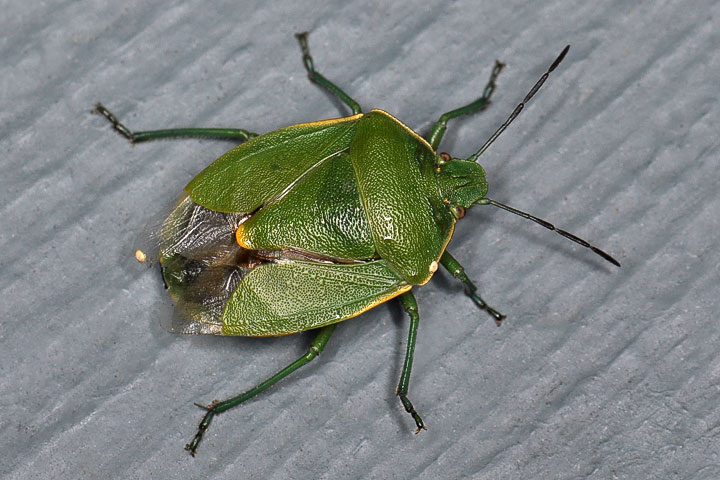 If attached, the green stink bug has a unforgettably pungent defence.
If attached, the green stink bug has a unforgettably pungent defence.
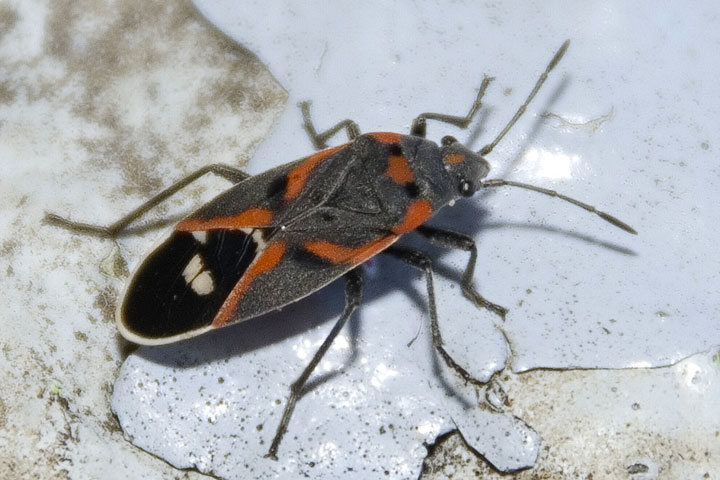 The milkweed bug is named after the one of its favourite plants. However, the milkweed is not common around the Lake, but another favourite is the dogbane. The spreading dogbane is common.
The milkweed bug is named after the one of its favourite plants. However, the milkweed is not common around the Lake, but another favourite is the dogbane. The spreading dogbane is common.
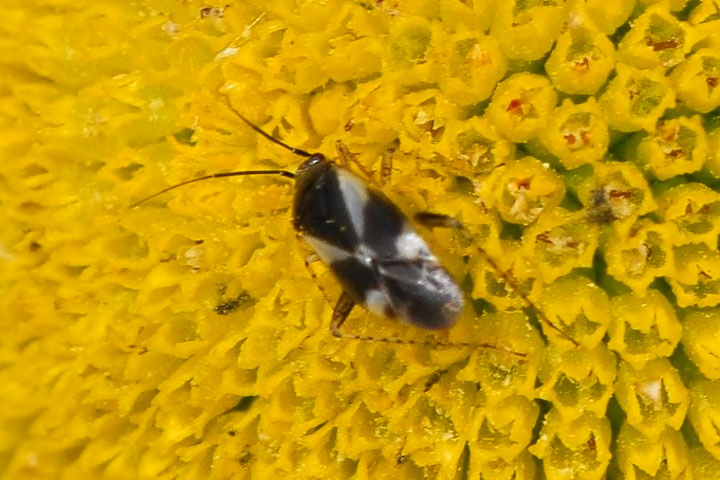 The minute pirate bug, also known as the insidious flower bug feeds upon other small insects such as aphids. It is often found on plats that is prey visit.
The minute pirate bug, also known as the insidious flower bug feeds upon other small insects such as aphids. It is often found on plats that is prey visit.
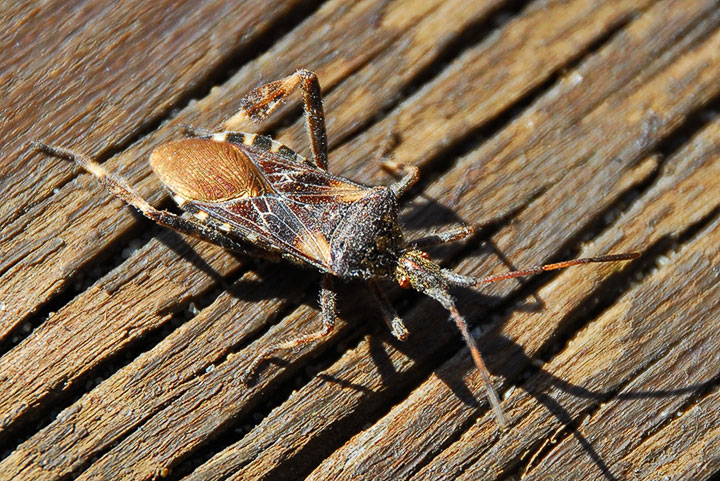 By the time the western conifer seed bug seeks refuge in homes in the fall, it has done its job: it sucks nutrients from the cones of pines, Douglas-fir and grand fir. This does not damage the trees, but it does inhibit their propagation.
By the time the western conifer seed bug seeks refuge in homes in the fall, it has done its job: it sucks nutrients from the cones of pines, Douglas-fir and grand fir. This does not damage the trees, but it does inhibit their propagation.
Some locals call this a stink bug. Certainly, it can emit a whiff of cedar when bothered. However, this is a mild by comparison to the pungent and persistent miasma from the real thing, such as the green stink bug.
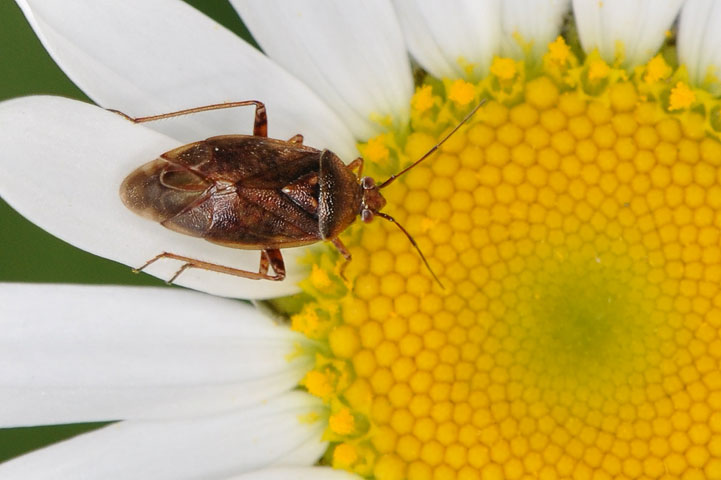 The tarnished plant bug feeds on a variety of plants. When it does so on crops, it is considered a pest for the damage it does. However, here it is visiting an invasive plant.
The tarnished plant bug feeds on a variety of plants. When it does so on crops, it is considered a pest for the damage it does. However, here it is visiting an invasive plant.
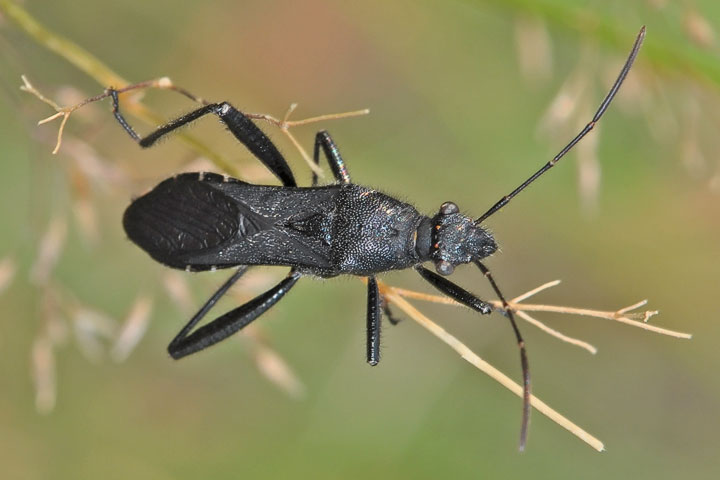 The black in the name, black grass bug (Irbisia sp.), refers to its colour; the grass refers to its favoured food.
The black in the name, black grass bug (Irbisia sp.), refers to its colour; the grass refers to its favoured food.
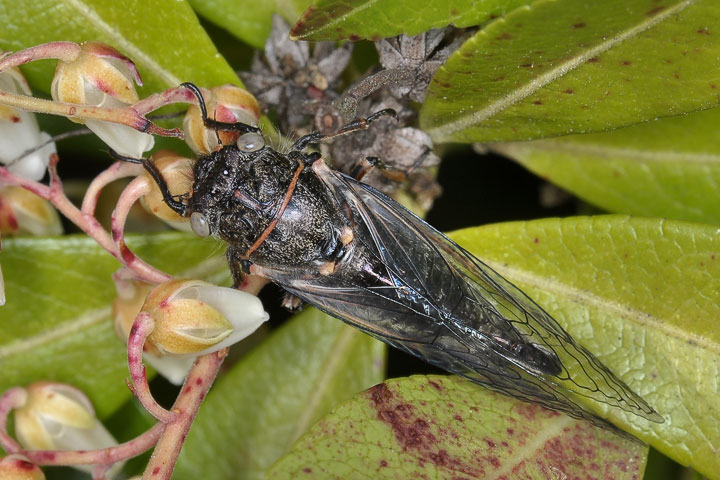 This cicada (a Platypedia putnami) was seen in May. It is the rarer of the two local species, having last been reported in southern BC (indeed, last seen anywhere in Canada) in 1942. ID by KGA Hamilton, a scientist at Agriculture and Agri-Food Canada.
This cicada (a Platypedia putnami) was seen in May. It is the rarer of the two local species, having last been reported in southern BC (indeed, last seen anywhere in Canada) in 1942. ID by KGA Hamilton, a scientist at Agriculture and Agri-Food Canada.
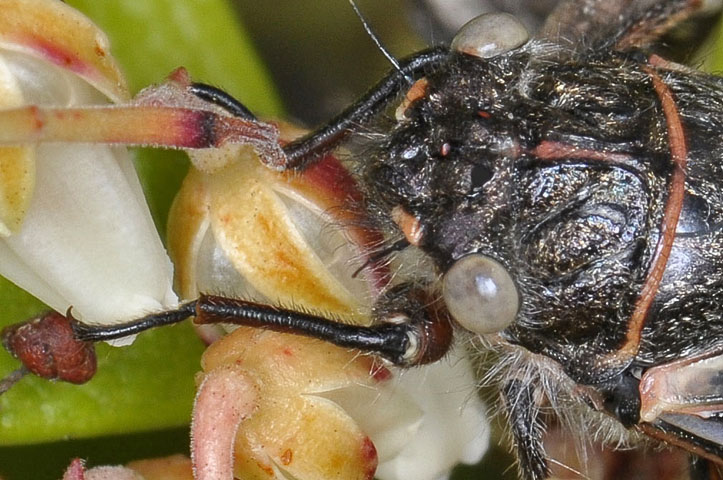 The region’s less common cicada is the Platypedia putnami. Its identification in the field relies upon the colour of the front legs, which are black.
The region’s less common cicada is the Platypedia putnami. Its identification in the field relies upon the colour of the front legs, which are black.
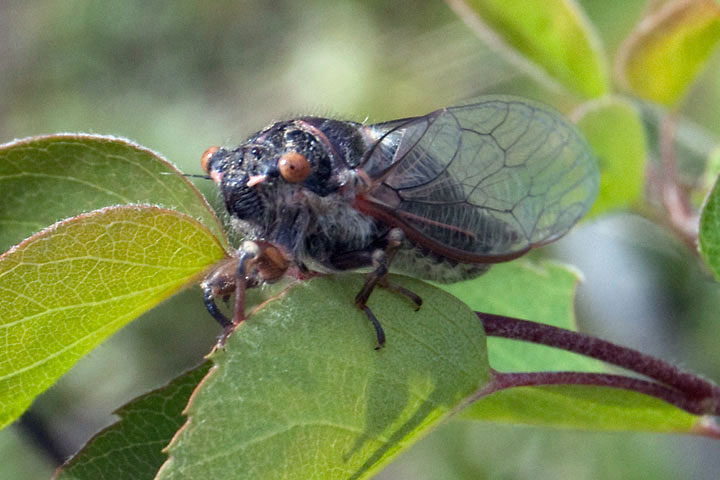 The region’s more common cicada is the Platypedia areolata, known commonly as the Orchard cicada. Its identification in the field relies upon the colour of the front legs, which show a reddish brown segment.
The region’s more common cicada is the Platypedia areolata, known commonly as the Orchard cicada. Its identification in the field relies upon the colour of the front legs, which show a reddish brown segment. Nicole Tremblay
Nicole Tremblay
![]()